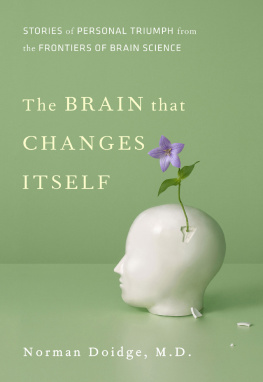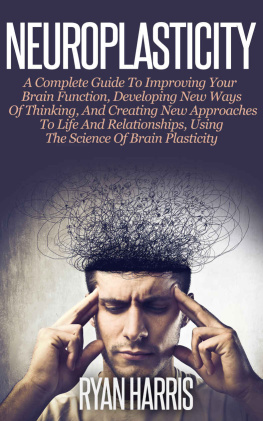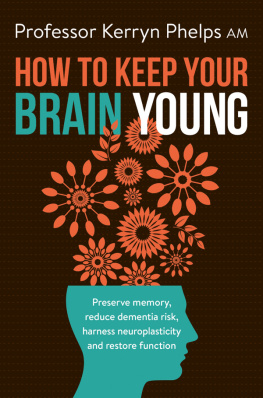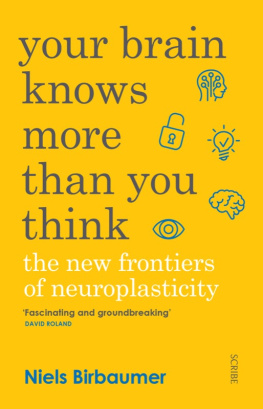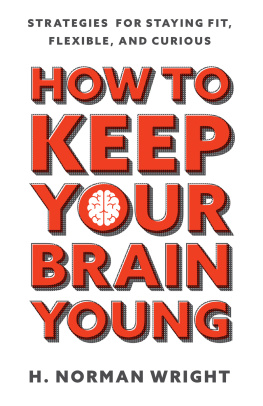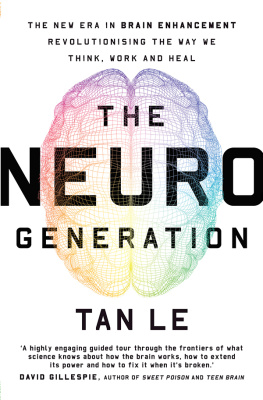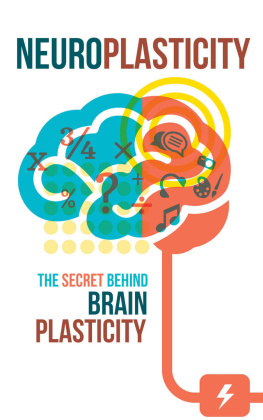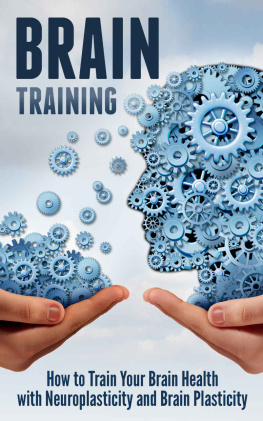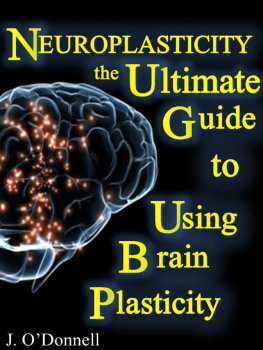The Brain That Changes Itself

The Brain That Changes Itself
Stories of Personal Triumph
from the Frontiers of Brain Science
NORMAN DOIDGE, M.D.
A James H. Silberman Book
VIKING
VIKING
Published by the Penguin Group Penguin Group (USA) Inc., 375 Hudson Street, New York, New York 10014, U.S.A. Penguin Group (Canada), 90 Eglinton Avenue East, Suite 700, Toronto, Ontario, Canada M4P 2Y3 (a division of Pearson Penguin Canada Inc.) Penguin Books Ltd, 80 Strand, London WC2R 0RL, England Penguin Ireland, 25 St. Stephens Green, Dublin 2, Ireland (a division of Penguin Books Ltd) Penguin Books Australia Ltd, 250 Camberwell Road, Camberwell, Victoria 3124, Australia (a division of Pearson Australia Group Pty Ltd) Penguin Books India Pvt Ltd, 11 Community Centre, Panchsheel Park, New Delhi110 017, India Penguin Group (NZ), 67 Apollo Drive, Mairangi Bay, Auckland 1311, New Zealand (a division of Pearson New Zealand Ltd) Penguin Books (South Africa) (Pty) Ltd, 24 Sturdee Avenue, Rosebank, Johannesburg 2196, South Africa
Penguin Books Ltd, Registered Offices:
80 Strand, London WC2R 0RL, England
First published in 2007 by Viking Penguin,
a member of Penguin Group (USA) Inc.
Copyright Norman Doidge, 2007
All rights reserved
Library of Congress Cataloging-in-Publication Data
Doidge, Norman.
The Brain that changes itself: stories of personal triumph from the frontiers of brain science /
Norman Doidge.
p. cm.
ISBN: 1-101-14711-3
1.Neuroplasticity. 2. Brain damagePatientsRehabilitation. I. Title.
QP363.3.D65 2007
612.8dc22
2006049224
Without limiting the rights under copyright reserved above, no part of this publication may be reproduced, stored in or introduced into a retrieval system, or transmitted, in any form or by any means (electronic, mechanical, photocopying, recording, or otherwise), without the prior written permission of both the copyright owner and the above publisher of this book.
The scanning, uploading, and distribution of this book via the Internet or via any other means without the permission of the publisher is illegal and punishable by law. Please purchase only authorized electronic editions and do not participate in or encourage electronic piracy of copyrightable materials. Your support of the authors rights is appreciated.
For Eugene L. Goldberg, M.D.,
because you said you might like to read it
Contents
Note to the Reader
All the names of people who have undergone neuroplastic transformations are real, except in the few places indicated, and in the cases of children and their families.
The Notes and References section at the end of the book includes comments on both the chapters and the appendices.
Preface
This book is about the revolutionary discovery that the human brain can change itself, as told through the stories of the scientists, doctors, and patients who have together brought about these astonishing transformations. Without operations or medications, they have made use of the brains hitherto unknown ability to change. Some were patients who had what were thought to be incurable brain problems; others were people without specific problems who simply wanted to improve the functioning of their brains or preserve them as they aged. For four hundred years this venture would have been inconceivable because mainstream medicine and science believed that brain anatomy was fixed. The common wisdom was that after childhood the brain changed only when it began the long process of decline; that when brain cells failed to develop properly, or were injured, or died, they could not be replaced. Nor could the brain ever alter its structure and find a new way to function if part of it was damaged. The theory of the unchanging brain decreed that people who were born with brain or mental limitations, or who sustained brain damage, would be limited or damaged for life. Scientists who wondered if the healthy brain might be improved or preserved through activity or mental exercise were told not to waste their time. A neurological nihilisma sense that treatment for many brain problems was ineffective or even unwarrantedhad taken hold, and it spread through our culture, even stunting our overall view of human nature. Since the brain could not change, human nature, which emerges from it, seemed necessarily fixed and unalterable as well.
The belief that the brain could not change had three major sources: the fact that brain-damaged patients could so rarely make full recoveries; our inability to observe the living brains microscopic activities; and the ideadating back to the beginnings of modern sciencethat the brain is like a glorious machine. And while machines do many extraordinary things, they dont change and grow.
I became interested in the idea of a changing brain because of my work as a research psychiatrist and psychoanalyst. When patients did not progress psychologically as much as hoped, often the conventional medical wisdom was that their problems were deeply hardwired into an unchangeable brain. Hardwiring was another machine metaphor coming from the idea of the brain as computer hardware, with permanently connected circuits, each designed to perform a specific, unchangeable function.
When I first heard news that the human brain might not be hardwired, I had to investigate and weigh the evidence for myself. These investigations took me far from my consulting room.
I began a series of travels, and in the process I met a band of brilliant scientists, at the frontiers of brain science, who had, in the late 1960s or early 1970s, made a series of unexpected discoveries. They showed that the brain changed its very structure with each different activity it performed, perfecting its circuits so it was better suited to the task at hand. If certain parts failed, then other parts could sometimes take over. The machine metaphor, of the brain as an organ with specialized parts, could not fully account for changes the scientists were seeing. They began to call this fundamental brain property neuroplasticity.
Neuro is for neuron, the nerve cells in our brains and nervous systems. Plastic is for changeable, malleable, modifiable. At first many of the scientists didnt dare use the word neuroplasticity in their publications, and their peers belittled them for promoting a fanciful notion. Yet they persisted, slowly overturning the doctrine of the unchanging brain. They showed that children are not always stuck with the mental abilities they are born with; that the damaged brain can often reorganize itself so that when one part fails, another can often substitute; that if brain cells die, they can at times be replaced; that many circuits and even basic reflexes that we think are hardwired are not. One of these scientists even showed that thinking, learning, and acting can turn our genes on or off, thus shaping our brain anatomy and our behaviorsurely one of the most extraordinary discoveries of the twentieth century.
In the course of my travels I met a scientist who enabled people who had been blind since birth to begin to see, another who enabled the deaf to hear; I spoke with people who had had strokes decades before and had been declared incurable, who were helped to recover with neuroplastic treatments; I met people whose learning disorders were cured and whose IQs were raised; I saw evidence that it is possible for eighty-year-olds to sharpen their memories to function the way they did when they were fifty-five. I saw people rewire their brains with their thoughts, to cure previously incurable obsessions and traumas. I spoke with Nobel laureates who were hotly debating how we must rethink our model of the brain now that we know it is ever changing.
The idea that the brain can change its own structure and function through thought and activity is, I believe, the most important alteration in our view of the brain since we first sketched out its basic anatomy and the workings of its basic component, the neuron. Like all revolutions, this one will have profound effects, and this book, I hope, will begin to show some of them. The neuroplastic revolution has implications for, among other things, our understanding of how love, sex, grief, relationships, learning, addictions, culture, technology, and psychotherapies change our brains. All of the humanities, social sciences, and physical sciences, insofar as they deal with human nature, are affected, as are all forms of training. All of these disciplines will have to come to terms with the fact of the self-changing brain and with the realization that the architecture of the brain differs from one person to the next and that it changes in the course of our individual lives.
Next page
